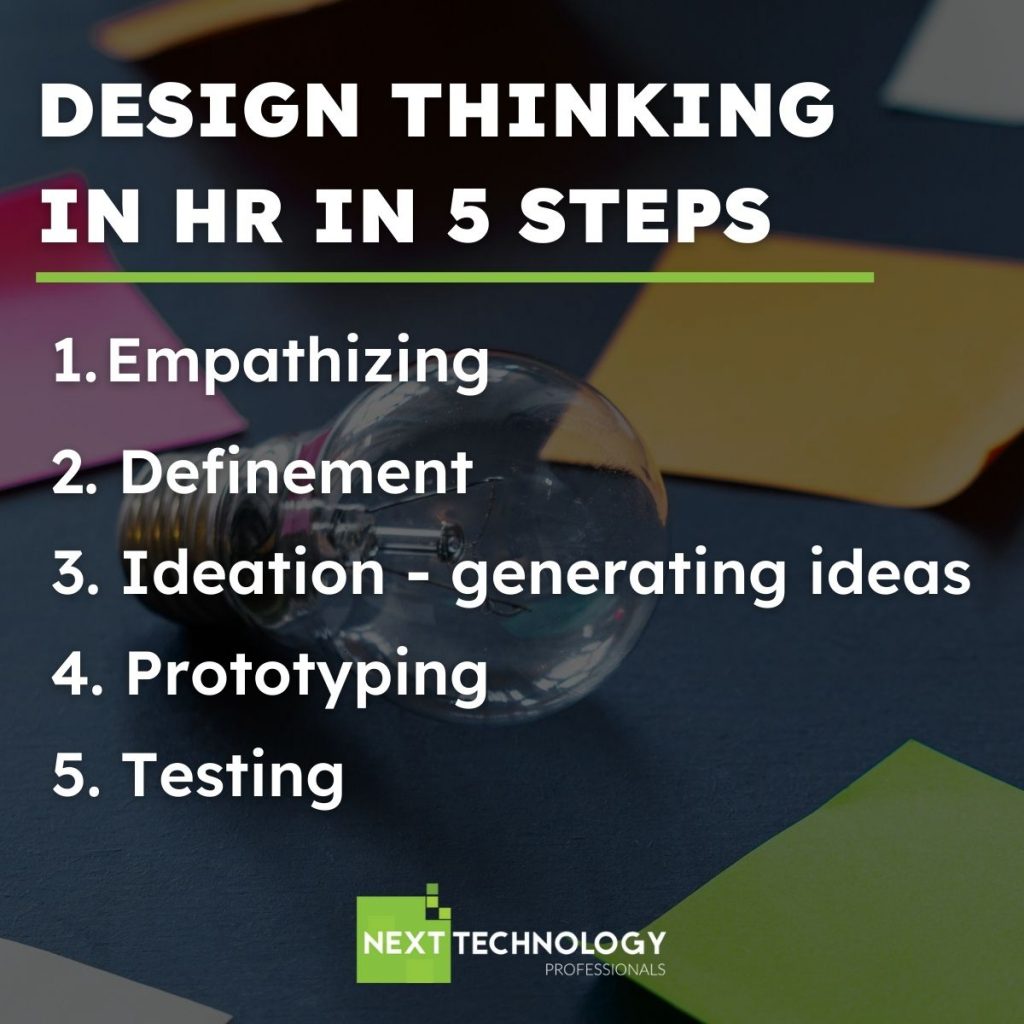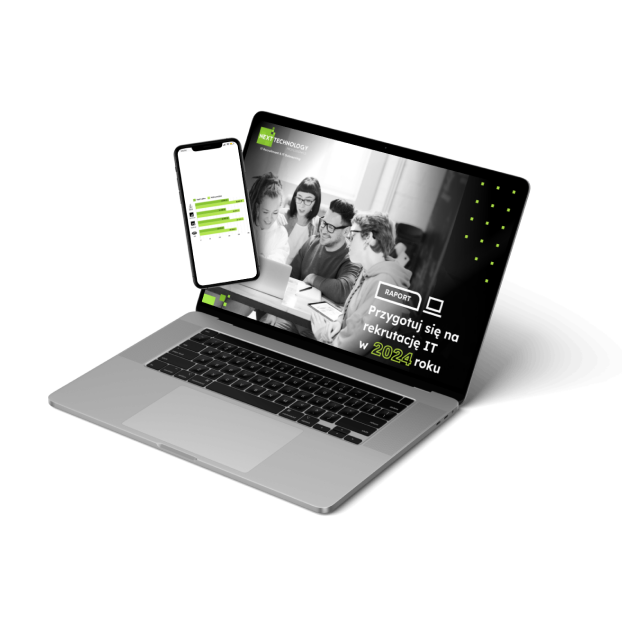In short, design thinking is the approach that focuses on people and their needs, thus helping to create solutions tailored to the expectations of their recipients. More and more often, the method is used in the HR industry.
How can we use design thinking in HR activities?
Let’s go through the 5 steps that are specific to this method of operation.

1. Empathizing
We should start working in the design thinking model by identifying the recipient of the designed solution. Empathizing, i.e. the first and basic stage of work, consists in trying to “put ourselves in the shoes” of the recipient and understand the needs and challenges which he has to face. For this purpose, we can support ourselves with various tools, such as creating a persona or building a map of empathy. Focus studies and interviews, as well as reports from previously conducted surveys already existing in the company, will also become helpful.
| An example from the HR industry: In the case of HR activities, we can focus, for example, on building the experience of candidates by understanding their perspectives and the path they take when applying for our job offers. At the empathic stage, we can conduct a candidate experience survey or audit the recruitment process, thanks to which we will be able to spot the greatest problems of candidates. |
2. Definement
After understanding the recipient’s perspective, it is time to define the problem. At the defining stage, we rely on the previously collected information and data. We wonder:
- What’s the problem?
- What does the audience really need?
- Which elements of the process need to be changed/modernized?
As a result, we will be able to identify the recipient’s (e.g. candidate’s) point of view and problematic issues that require improvement. What is necessary here is out-of-the-box thinking, a broad approach and a fresh perspective without fear, limitations, guesswork and imposed thinking patterns. Only then will we be able to accurately identify bottlenecks and find the right solutions.
3. Ideation, i.e. generating ideas
In the ideation stage, brainstorming and creative discussion methods will prove useful. This is the time to collect various ideas to solve previously defined problems. We go beyond the scheme here. We avoid skepticism, judging and negating the suggestions of others. Instead, we use tools for creative work, such as sticky notes, magnets and flipcharts.
When working, it is worth taking care of the right atmosphere and having fun. Positive emotions will broaden the perspective of discussion participants and make them more willing to share unusual ideas with openness and courage.
4. Prototyping
The next step is to create a prototype. From the pool of developed ideas, we choose a few or one of the best. Then we move on to structured work, creating a detailed action plan along with a project to implement the solution.
| An example from the HR industry: If, during emphatizing, we identified an unreadable job advertisement as the main problem in the recruitment process, now we can create a prototype of a new job advertisement that will meet the expectations of the candidates in this regard. |
If the bottleneck turns out to be a too long recruitment form, requiring the candidates to invest too much time and attention, we can create a prototype of a new form with a reduced number of questions, improving its readability and graphical attractiveness at the same time.
5. Testing
Finally, it is time to verify the effects of our work. We examine whether the introduced solutions actually work. We can check them ourselves, pass them on to others for evaluation or collect feedback from a selected group of recipients who had the opportunity to test them.
At this stage, honest evaluation and openness to feedback are key. If it turns out that our solution needs improvement, we should go back to the previous steps and go through the design thinking process again.
If you’re looking for an IT recruitment agency with a creative approach to finding skilled specialists, contact us. We’ll be glad to help you in hiring IT experts.




